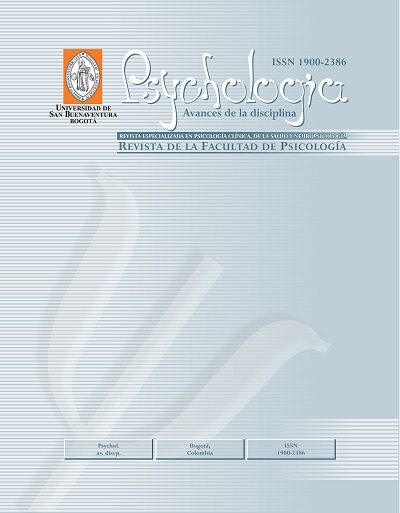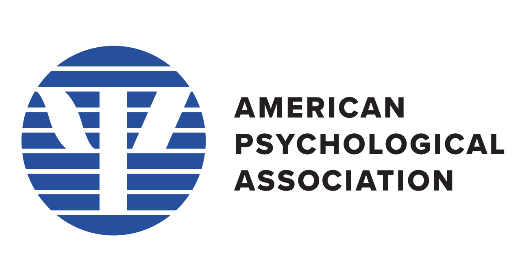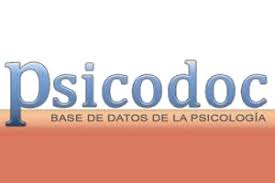Esta revista proporciona un acceso abierto inmediato a su contenido, basado en el principio de que ofrecer al público un acceso libre a las investigaciones ayuda a un mayor intercambio global de conocimiento.
Por tanto se acoge a la Licencia Creative Commons 4.0 Atribuciones Reconocimiento – NoComercial – CompartirIgual (by-nc-sa): No se permite un uso comercial de la obra original ni de las posibles obras derivadas, la distribución de las cuales se debe hacer con una licencia igual a la que regula la obra original.
http://creativecommons.org/licenses/by-nc-sa/4.0/
Resumen
La lactancia materna exclusiva (LME) es una de las conductas saludables con mayor valor protector para la salud del niño y de la madre. La autoeficacia es un predictor de diferentes conductas saludables. El objetivo de esta investigación
fue diseñar y validar un instrumento para medir la autoeficacia para lactar en mujeres embarazadas. Se realizó un estudio instrumental con usuarias de dos centros de salud de primer nivel de atención, seleccionadas a través de un
muestreo no probabilístico. Se excluyeron aquellas mujeres que fueran analfabetas o tuvieran alguna condición médica que contraindicara la LME. Se utilizaron análisis descriptivos, bivariados y multivariados para obtener las propiedades psicométricas del instrumento. Participaron 369 mujeres. A través de un análisis factorial exploratorio se obtuvo una estructura unidimensional de 15 reactivos que explicó el 83% de la varianza total del instrumento (alfa de Cronbach = .93). Además, la autoeficacia para lactar se asoció (p <.05) con la intención para lactar, la edad y la escolaridad. El instrumento de autoeficacia para lactar obtenido mostró propiedades psicométricas adecuadas por lo que puede ser útil para identificar a las mujeres que están en riesgo de no iniciar la LME desde el nacimiento de su hijo, además, parece ser el primer instrumento de autoeficacia para lactar en México.
Palabras clave:
Referencias
Bandura, A. (1997). Self-efficacy: The exercise of control. New York: Freeman.
Bandura, A. (2001). Social cognitive theory: an agentic perspective. Annual Review of Psychology, 52(1), 1-26. doi:10.1146/annurev.psych.52.1.1
Chowdhury, R., Sinha, B., Sankar, M. J., Taneja, S., Bhandari, N., Rollins, N., ... & Martines, J. (2015). Breastfeeding and maternal health outcomes: a systematic review and meta‐analysis. Acta Paediatrica, 104(S467), 96-113. doi:10.1111/apa.13102
Conner, M., & Norman, P. (2005). Predicting health behaviour: Research and practice with social cognition models. Berkshire: Open University Press.
de Jager, E., Broadbent, J., Fuller-Tyszkiewicz, M., & Skouteris, H. (2014). The role of psychosocial factors in exclusive breastfeeding to six months postpartum. Midwifery, 30(6), 657-666. doi:10.1016/j.midw.2013.07.008
Dennis, C. L. (1999). Theoretical underpinnings of breastfeeding confidence: a self-efficacy framework. Journal of Human Lactation, 15 (3), 195-201. doi:10.1177/089033449901500303
Dennis, C.L. (2003). The breastfeeding self-efficacy scale: Psychometric assessment of the short form. Journal of Obstetric, Gynecologic, & Neonatal Nursing, 32(6), 734-744.
Dodgson, J. E., Henly, S. J., Duckett, L., & Tarrant, M. (2003). Theory of Planned Behavior-Based Models for Breastfeeding Duration Among Hong Kong Mothers. Nursing Research, 52(3), 148-158. doi:10.1097/00006199-200305000-00004
Glassman, M. E., McKearney, K., Saslaw, M., & Sirota, D. R. (2014). Impact of breastfeeding self-efficacy and sociocultural factors on early breastfeeding in an urban, predominantly Dominican community. Breastfeeding Medicine, 9(6), 301-307. doi:10.1089/bfm.2014.0015
Gregory, A., Penrose, K., Morrison, C., Dennis, C.-L., & MacArthur, C. (2008). Psychometric Properties of the Breastfeeding Self-Efficacy Scale- Short Form in an Ethnically Diverse U.K. Sample. Public Health Nursing, 25(3), 278-284. doi:10.1111/j.1525-1446.2008.00705.x
Espinoza-Cadima, C., Zamorano-Jiménez, C., & Graham-Pontones, S. (2014). Factores que determinan la duración de la lactancia materna durante los tres primeros meses de vida. Revista Anales Médicos, 59(2), 120-126.
Heinig, M. J. (2001). Host Defense Benefits of Breastfeeding for the Infant. Pediatric Clinics of North America, 48(1), 105-123. doi:10.1016/s0031-3955(05)70288-1
Henshaw, E. J., Fried, R., Siskind, E., Newhouse, L., & Cooper, M. (2015). Breastfeeding self-efficacy, mood, and breastfeeding outcomes among primiparous women. Journal of Human Lactation, 31(3), 511-518. doi:10.1177/0890334415579654
Horta, B. L., Loret de Mola, C., & Victora, C. G. (2015). Long‐term consequences of breastfeeding on cholesterol, obesity, systolic blood pressure and type 2 diabetes: a systematic review and meta‐analysis. Acta Paediatrica, 104(S467), 30-37. doi:10.1111/apa.13133
Horta, B. L., & Victora, C. G. (2013). Long-term effects of breastfeeding-a systematic review.
Instituto Nacional de Salud Pública y UNICEF México. (2016). Encuesta Nacional de Niños, Niñas y Mujeres, 2015- Encuesta de Indicadores Múltiples por Conglomerados 2015, Informe Final. Ciudad de México: Instituto Nacional de Salud Pública y UNICEF México.
Ip, S., Chung, M., Raman, G., Chew, P., Magula, N., Trikalinos, T., & Lau, J. (2007). Breastfeeding and maternal and infant health outcomes in developed countries. Evid Technol Asses (Full Rep), 153(153), 1-186.
Isaacs, C. E. (2005). Human Milk Inactivates Pathogens Individually, Additively, and Synergistically. The Journal of Nutrition, 135(5), 1286-1288. doi:10.1093/jn/135.5.1286
Labbok, M. H. (2013). Breastfeeding: Population-Based Perspectives. Pediatric Clinics of North America, 60(1), 11-30. doi:10.1016/j.pcl.2012.09.011
Lodge, C. J., Tan, D. J., Lau, M. X. Z., Dai, X., Tham, R., Lowe, A. J., ... & Dharmage, S. C. (2015). Breastfeeding and asthma and allergies: a systematic review and meta‐analysis. Acta Paediatrica, 104(S467), 38-53. doi:10.1111/apa.13132
Lodge, C. J., Bowatte, G., Matheson, M. C., & Dharmage, S. C. (2016). The role of breastfeeding in childhood otitis media. Current Allergy and Asthma Reports, 16(9), 68. doi:10.1007/s11882-016-0647-0
Loke, A. Y., & Chan, L. K. S. (2013). Maternal Breastfeeding Self‐Efficacy and the Breastfeeding Behaviors of Newborns in the Practice of Exclusive Breastfeeding. Journal of Obstetric, Gynecologic, & Neonatal Nursing, 42(6), 672-684. doi:10.1111/1552-6909.12250
Mårild, S., Hansson, S., Jodal, U., Odén, A., & Svedberg, K. (2007). Protective effect of breastfeeding against urinary tract infection. Acta Paediatrica, 93(2), 164-167. doi:10.1111/j.1651-2227.2004.tb00699.x
McCarter-Spaulding, D. E., & Dennis, C.-L. (2010). Psychometric testing of the breastfeeding self-efficacy scale-short form in a sample of Black women in the United States. Research in Nursing & Health, 33(2), 111-119. doi:10.1002/nur.20368
McQueen, K., Sieswerda, L. E., Montelpare, W., & Dennis, C. L. (2015). Prevalence and Factors Affecting Breastfeeding Among Aboriginal Women in Northwestern Ontario. Journal of Obstetric, Gynecologic & Neonatal Nursing, 44(1), 51-68. doi:10.1111/1552-6909.12526
Meedya, S., Fahy, K., & Kable, A. (2010). Factors that positively influence breastfeeding duration to 6 months: A literature review. Women and Birth, 23(4), 135-145. doi:10.1016/j.wombi.2010.02.002
Meneses, J., Barrios, M., Lozano, L. M., Bonillo, A., Turbany, J., Cosculluela, A., & Valer, S. (2013). Psicometría. Barcelona: Editorial UOC.
Moss, B. G., & Yeaton, W. H. (2014). Early childhood healthy and obese weight status: potentially protective benefits of breastfeeding and delaying solid foods. Maternal and Child Health Journal, 18(5), 1224-1232. doi:10.1007/s10995-013-1357-z
Oliver-Roig, A., d’Anglade-González, M. L., García-García, B., Silva-Tubio, J. R., Richart-Martínez, M., & Dennis, C. L. (2012). The Spanish version of the breastfeeding self-efficacy scale-short form: reliability and validity assessment. International Journal of Nursing Studies, 49(2), 169-173. doi:10.1016/j.ijnurstu.2011.08.005
OPS-OMS. (2014). Lactancia materna: un tema contemporáneo en un mundo globalizado. Recuperado de: www.paho.org
Rodríguez-García, J., & Acosta-Ramírez, N. (2008). Factores Asociados a la Lactancia Materna Exclusiva en Población Pobre de Áreas Urbanas de Colombia. Revista de Salud Pública, 10(1), 71-84. doi:10.1590/s0124-00642008000100007.
Sankar, M. J., Sinha, B., Chowdhury, R., Bhandari, N., Taneja, S., Martines, J., & Bahl, R. (2015). Optimal breastfeeding practices and infant and child mortality: a systematic review and meta‐analysis. Acta Paediatrica, 104(S467), 3-13. Doi:10.1111/apa.13147
StataCorp. (2015). Stata Statistical Software: Release 14. College Station, TX: StataCorp LP.
World Health Organization. (2011). Exclusive breastfeeding for six months best for babies everywhere. Recuperado de: http://www.who.int/mediacentre/news/statements/2011/breastfeeding_20110115/en/
Wutke, K., & Dennis, C.-L. (2007). The reliability and validity of the Polish version of the Breastfeeding Self-Efficacy Scale-Short Form: Translation and psychometric assessment. International Journal of Nursing Studies, 44(8), 1439-1446. doi:10.1016/j.ijnurstu.2006.08.001
Zubaran, C., Foresti, K., Schumacher, M., Thorell, M. R., Amoretti, A., Müller, L., & Dennis, C. L. (2010). The Portuguese Version of the Breastfeeding Self-Efficacy Scale—Short Form. Journal of Human Lactation, 26(3), 297-303. doi:10.1177/0890334409359916





















